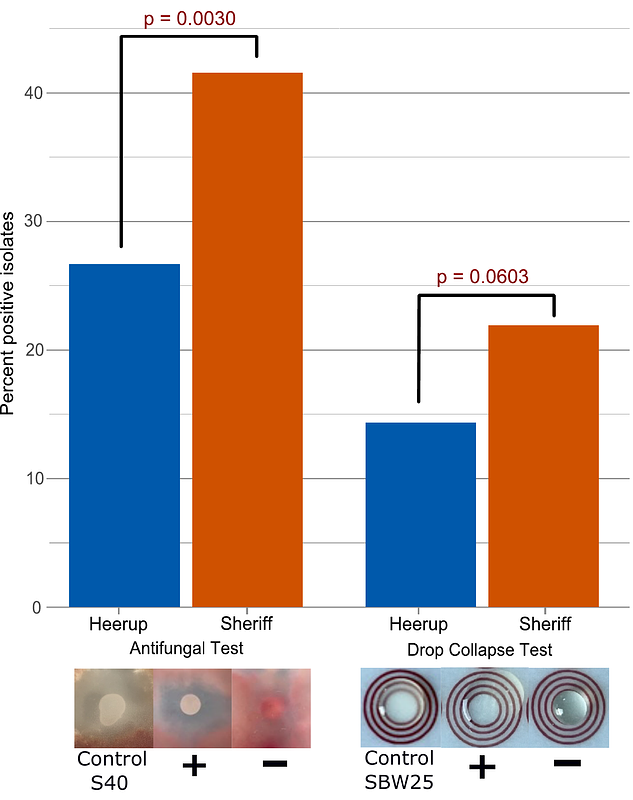Pseudomonas taxonomic and functional microdiversity in the wheat rhizosphere is cultivar-dependent and links to disease resistance profile and root diameter

Pseudomonas taxonomic and functional microdiversity in the wheat rhizosphere is cultivar-dependent and links to disease resistance profile and root diameter
Herms, C. H.; Hennessy, R. C.; Bak, F.; Guan, Y.; Browne, P. D.; Nielsen, T. K.; Hansen, L. H.; Dresboll, D. B.; Nicolaisen, M.
AbstractThe rhizosphere microbiome contributes to crop health in the face of disease pressures. Increased diversity and production of antimicrobial metabolites are characteristics of the microbiome that underpin microbial-mediated pathogen resistance. A goal of sustainable agriculture is to unravel the mechanisms by which crops assemble beneficial microbiomes, but precise understanding of the ability of the plant to manipulate intragenus microdiversity is unclear. Through an integrative approach combining culture-dependent methods and long-read amplicon sequencing, we demonstrate cultivar-dependent taxonomic and functional microdiversity of the rhizocompetent and bioactive Pseudomonas genus associated with Fusarium-resistant versus susceptible winter wheat cultivars. The resistant cultivar demonstrated increased Pseudomonas taxonomic but not biosynthetic diversity when compared to the susceptible cultivar, correlating with a thinner root diameter of the resistant cultivar. We found enrichment of antifungal Pseudomonas isolates, genes (chitinase), and biosynthetic gene clusters (pyoverdine) in the resistant cultivar. Overall, we highlight cultivar-dependent microdiversity of Pseudomonas taxonomy and functional potential in the rhizosphere, which may link to root morphology and play a role in crop susceptibility to disease.


